26 Foods That Will Last Forever In Your Pantry
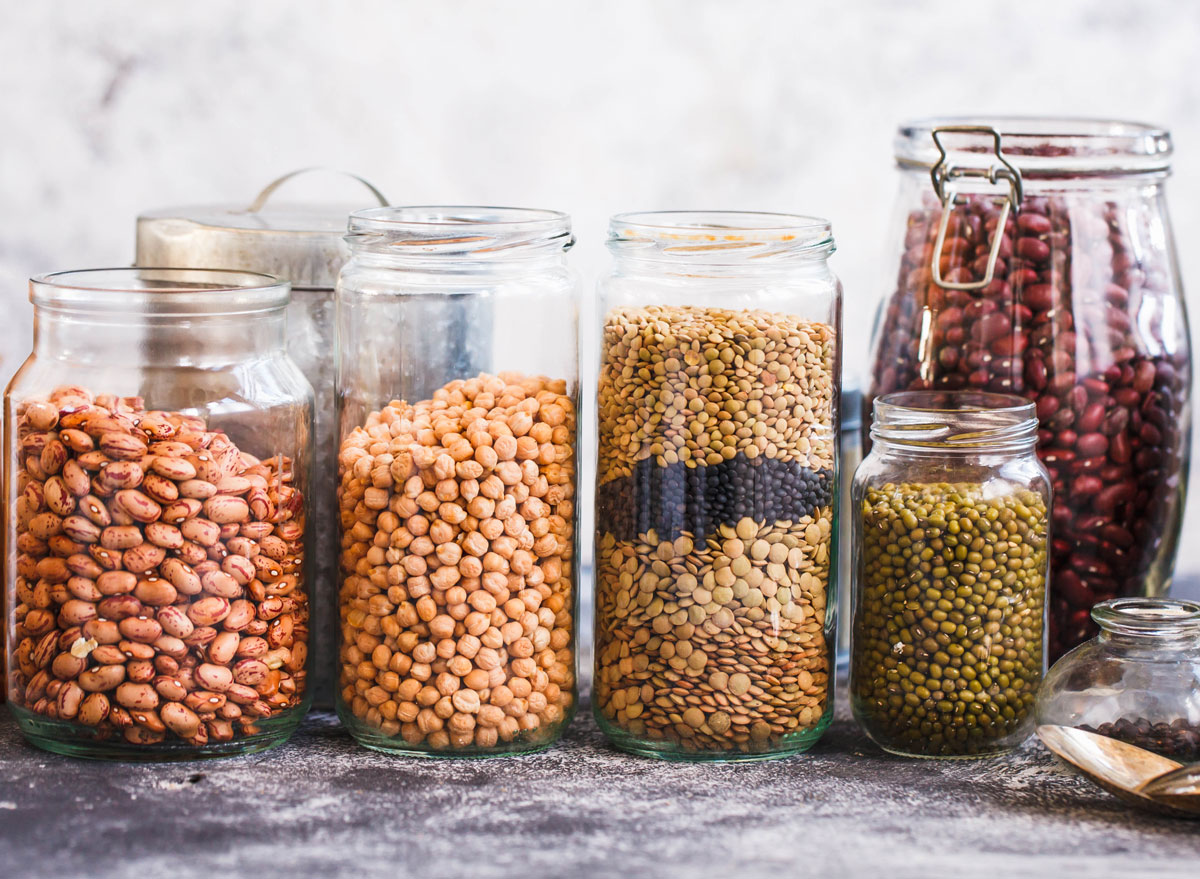
It’s safe to say that most people have a handful of pantry items that have been sitting on their shelves at home, collecting dust and waiting to be opened, for what seems like forever. And even though foods with the longest shelf life like your bags of rice, boxes of pasta, and cans of beans are considered shelf-stable and can be stored at room temperature, you may be wondering exactly how long each item is supposed to last before it goes bad.
Lucky for you—and your wallet—most shelf-stable foods are safe indefinitely (aka forever!), according to the U.S. Department of Agriculture (USDA). According to the USDA, in order for a perishable food to become shelf stable, it has to be “treated by heat and/or dried to destroy foodborne microorganisms.” But the important word here is “safe,” because although these foods may be safe forever and last beyond their “best buy” date, that doesn’t mean they keep their quality forever. Taste and texture degrade over time, as will the nutritional value of the food.
In order to know just how long the food in your pantry will last, you can check the USDA’s fact page or use the USDA’s FoodKeeper App, which was developed by the Food Safety and Inspection Service along with the Food Marketing Institute and Cornell University, to give consumers an easy way to check the shelf life of pretty much any food they own.
Using the FoodKeeper App, we gathered a list of the foods that the USDA says will last the longest in your pantry, ranging from a year to “forever!” Use this resource as a guide when you want to see exactly how long you can keep that food in your pantry to maintain its quality, but always remember to check the smell and appearance of the food before eating it. If you see mold on food or if canned goods are deeply or sharply dented, rusted, bulging, or leaking, that’s a sign the food may have gone bad or been contaminated.
Read on, and for more healthy eating tips, check out 10 Amazing Benefits of Eating Protein.
Apple cider vinegar: Indefinitely
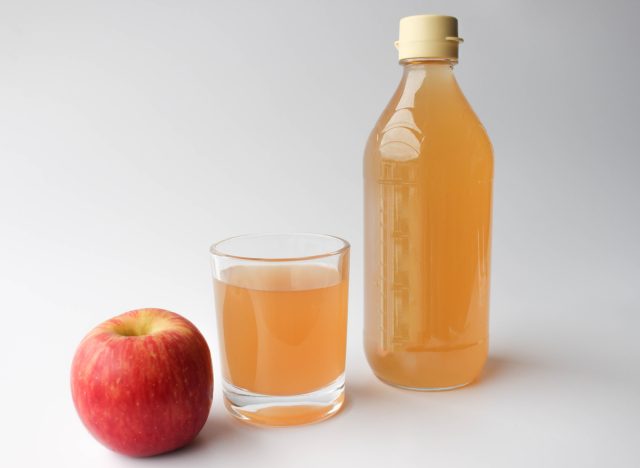
Ongoing research has shown so far that including apple cider vinegar (ACV) in your diet can help manage blood sugar levels and possibly help prevent blood sugar spikes when eating foods heavy in refined carbohydrates and sugars. Because of this, ACV has made its way into more home kitchens than before, and if you’re thinking of adding some to the pantry, you’ll be pleased to know it can stay in there forever.
Chia seeds: 18 months
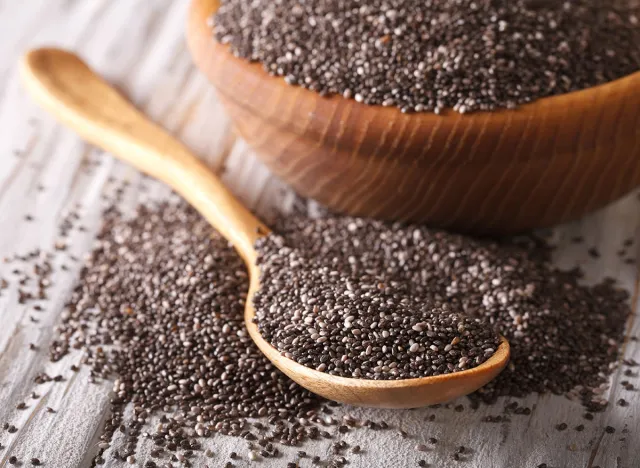
Need a boost of fiber, protein, and healthy fats that you can throw right on top of your favorite yogurt parfaits, or oatmeal, or in a jar with milk overnight to make healthy pudding? Chia seeds are the perfect pantry addition, and according to the FoodKeeper App, they’ll last up to 18 months from your date of purchase.
Red wine: 3-5 years

There’s a reason for the saying, “Ages like fine wine.” Over time, the texture and composition of wine can change, and red wines specifically can become smoother. However, there’s a limit to how long you can let your wine age, and FoodKeeper gives it a range of three to five years.
However, how you store the wine matters a great deal. FoodKeeper says to make sure you’re storing red wine in a cool, dark place away from direct sunlight.
Mustard: 1-2 years
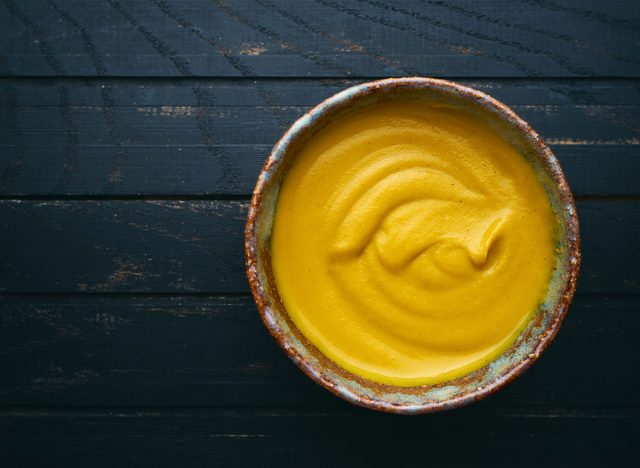
For those who love mustard on their hot dogs, burgers, or sandwiches, you’ll be glad to know that your bottle most likely won’t go bad in the refrigerator. FoodKeeper says mustard can last one to two years after the date of purchase, and that condiments like this will always last longer if refrigerated.
Soy sauce: 3 years
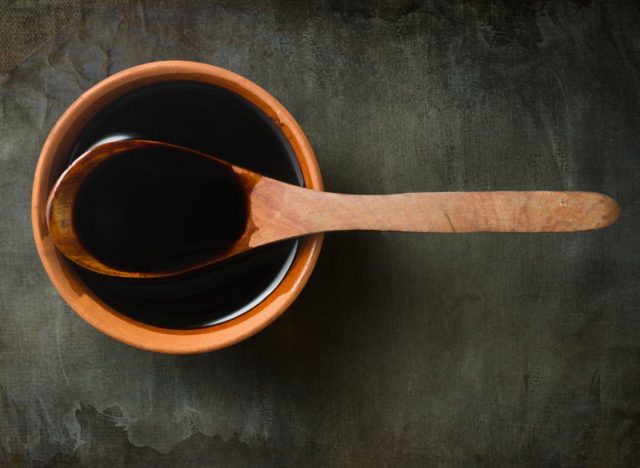
Made from fermented soybeans and wheat, soy sauce is a popular condiment to use for savory flavor on a variety of dishes. People often question whether they need to put their bottle of soy sauce in the refrigerator, but it can stay unopened in your pantry for up to three years. Once opened, FoodKeeper says that soy sauce is safe at room temperature or refrigerated, but the quality will be better if kept cold.
Canned coconut milk: 2-5 years
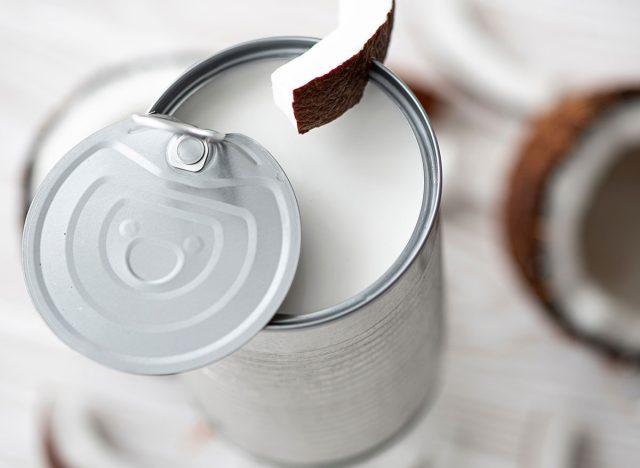
Whether you need a dash to cook up some Thai curry or want to try making a creamy non-dairy latte, having a can or two of coconut milk on hand is always a good idea. And if you end up buying a can at the store and not using it, you’ll still have between two and five years before the can goes bad. But, once you’ve opened the canned coconut milk, the lifespan shortens to about four days, according to FoodKeeper.
Coconut oil: 3 years
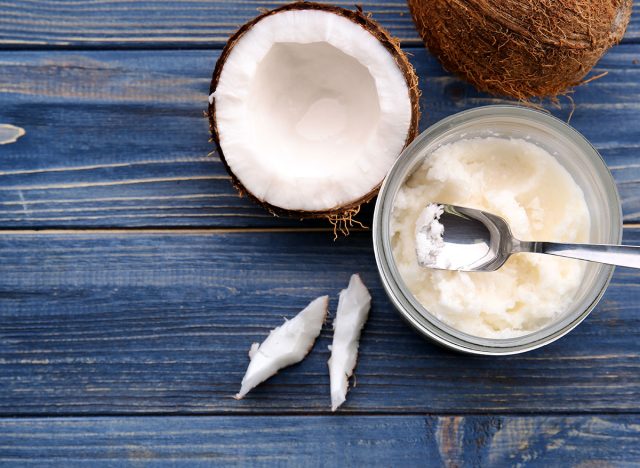
Aside from cooking, people commonly use coconut oil for oil pulling or as a boost of energy in their coffee. If you like to keep a jar of this oil in your pantry, you’ll have about three years before it goes bad.
Since it’s a saturated fat, meaning it often hardens at room temperature, it is not recommended to keep it in the refrigerator or freezer, as it will become too difficult to use.
Sesame oil: 2 years
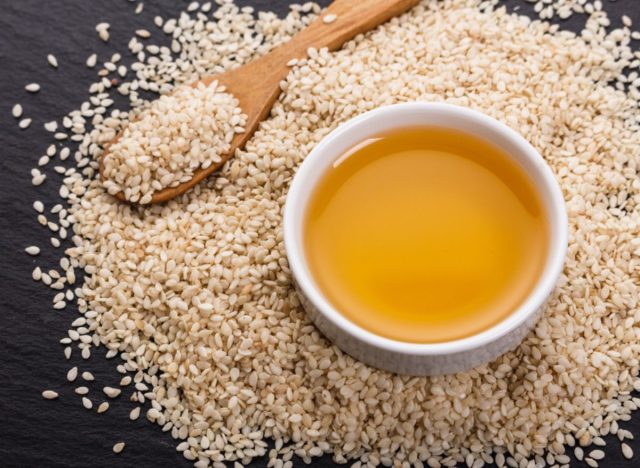
Sesame oil is known as one of the healthier oil options to use for cooking, mainly because of its high levels of antioxidants. For instance, this oil contains sesamol and sesaminol, which have both been found to help reduce inflammation and aid in better overall health.
If you’re looking to keep some on hand, you’ll have about two years to leave it in your pantry unopened. After you open it, you still have around six months to use it.
Canned tomatoes (and other acidic fruits and vegetables): 12-18 months
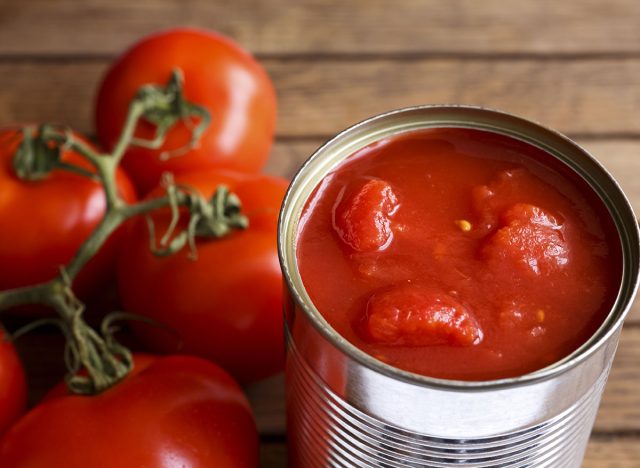
According to the USDA, “high-acidic canned goods” can be kept unopened on the pantry shelf for 12-18 months. Once you open them, they can stay in the refrigerator for up to one week.
Canned goods with high acidity include tomatoes, grapefruit, vinegar-based products, and fruit juices like tomato, orange, lemon, and lime.
Rice: 2 years
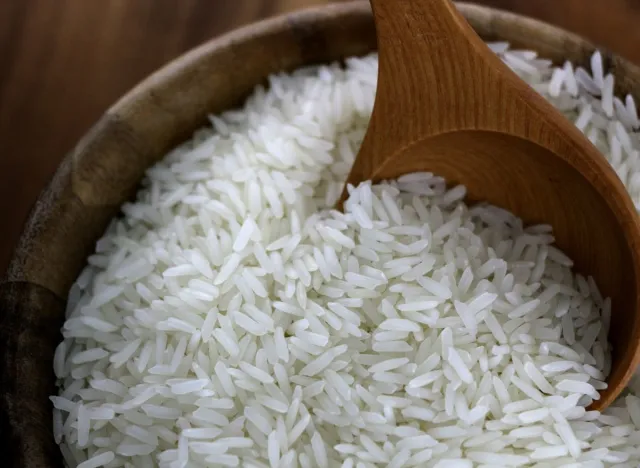
Rice is an inexpensive grain to keep in the pantry and is one of the most versatile carbohydrates that you can use as a side to most dishes. It’s also relatively easy to prepare, especially if you have a rice cooker or instant pot.
If you want to keep a bag of your preferred type of rice in your pantry for when you’ll need it next, the USDA says it will stay good for up to two years.
Dried pasta: 2 years
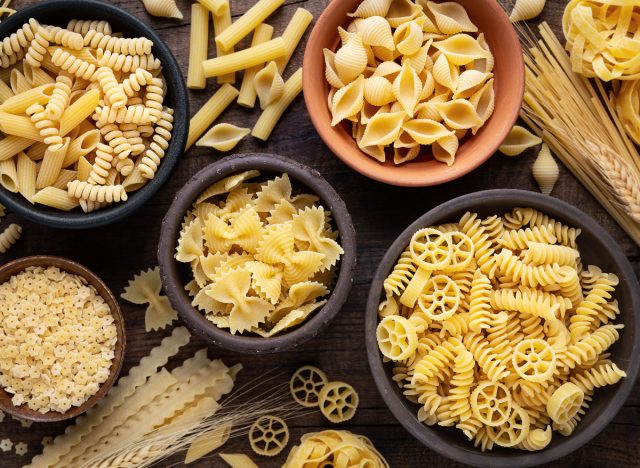
Similar to dried rice, you can keep a variety of dried pasta in your pantry or cabinets for up to two years without it going bad. The FoodKeeper App adds that once the box of pasta is opened, your time gets shortened to about a year. But that’s still quite a long time!
Jerky: 1 year
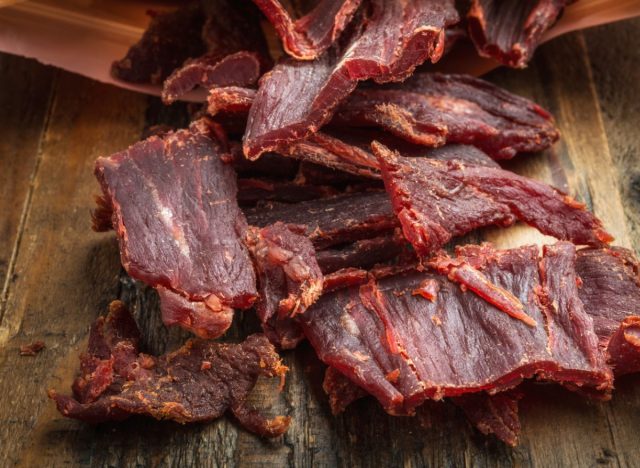
Not only is beef jerky (as well as other types of jerky) a shelf-stable snack that you can take on the go at any time, but it’s also a great high-protein choice when you need a mid-afternoon boost.
If you want to buy a few bags at the store to keep in your pantry for busy days or upcoming hiking trips, you’ll have about a year to open and enjoy.
Canned pineapple: 12-18 months
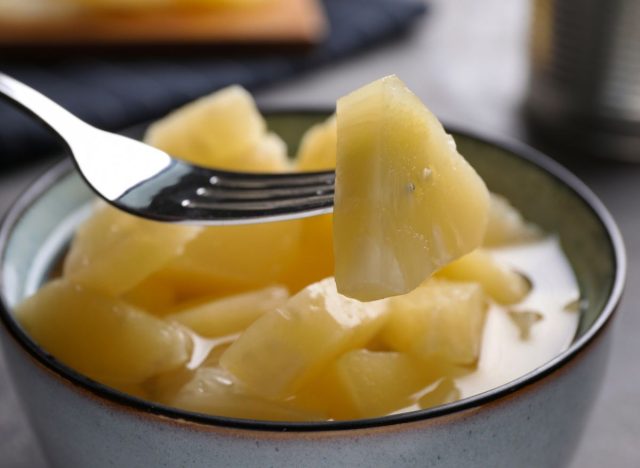
Canned fruit can be great for certain recipes where the freshness of the fruit doesn’t matter, and it can be a much more affordable and long-lasting option for those who struggle with not letting fresh fruit go to waste. If you’re a fan of canned fruit like pineapple, you’ll be able to keep it on the shelf unopened for 12-18 months without it going bad.
Pickles: 12-18 months
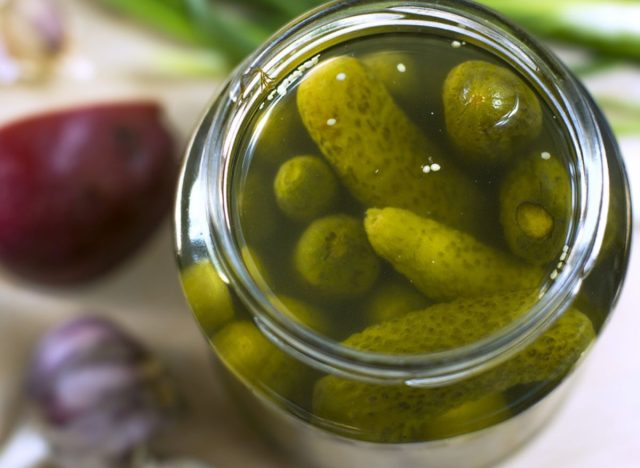
A pickled food is anything that has been jarred with brine or vinegar, with the most common food to pickle being cucumber. Unopened pickles, as well as most foods that have been treated with a vinegar or acid-based liquid, can last on your shelf for about 12-18 months. This also includes sauerkraut, in case you’re interested in the amazing benefits it can have on your digestion and gut health.
Canned pumkin: 2-5 years
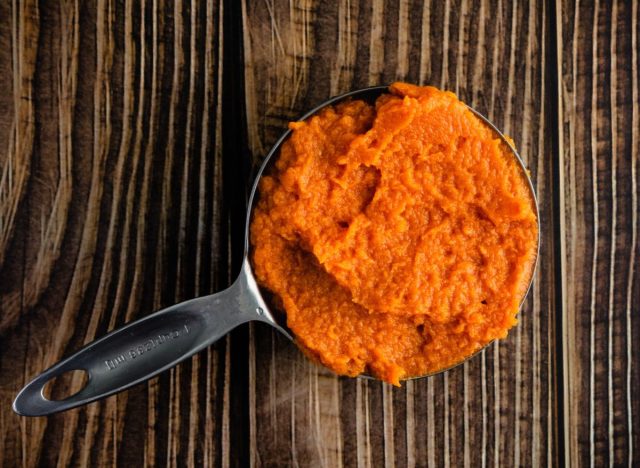
Having a can or two of pureed pumpkin on your shelf can be great for your favorite fall and winter recipes, or if you want a slice of pumpkin pie at any time of year. Because pumpkin is a low-acidic food, it can be kept in a can on the shelf for two to five years unopened.
Canned carrots (and other low-acidic vegetables): 2-5 years
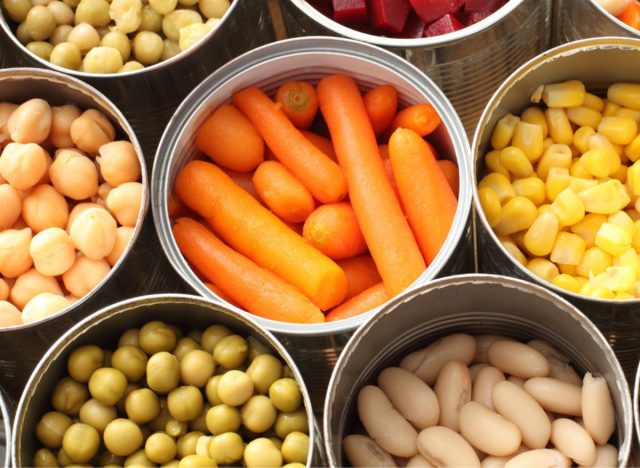
Along with canned pumpkin, another low-acidic vegetable that can last on your shelf for two to five years without spoiling is canned carrots. Keeping a can of this vegetable can be helpful when you need it for a quick recipe like an easy carrot cake or brown sugar-glazed carrots.
Canned beans: 2-5 years
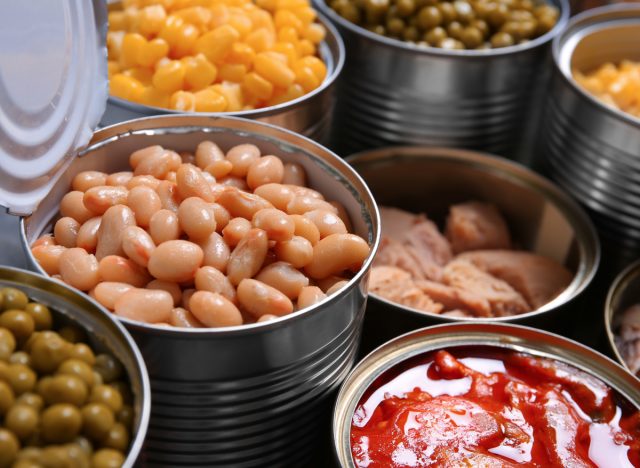
Canned beans are an easy solution for so many dishes. You can make refried beans with pinto beans, you can throw some black beans into a burrito or your favorite tacos, or you can take canned red beans and mix them with rice. Regardless of the specific type, you’ll get a boost of protein and fiber, and you’ll be able to keep these unopened for two to five years.
Dried beans: 1-2 years
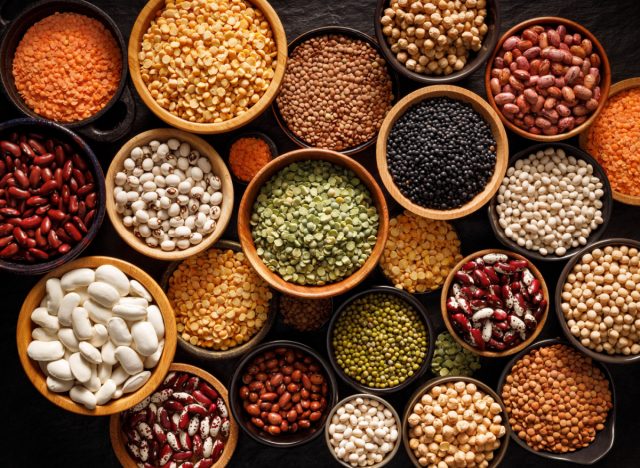
Dried beans are an even more affordable way to consume beans, but they do come with a little more effort required. Most dry beans need you to soak them in water beforehand, which is an added step that some people don’t want to take when they’re looking for a quick meal prep. But if you don’t mind the extra effort, you’ll save money by opting for dried beans over canned, and most dried varieties will last one to two years on the shelf.
Canned chicken: 5 years
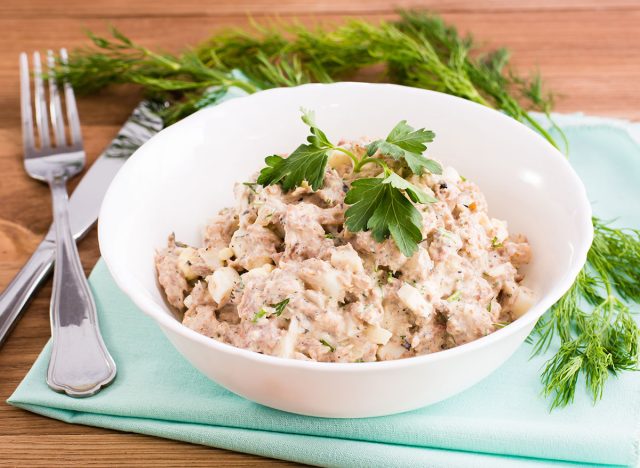
Chicken is a great lean protein source, with a can of chicken providing around 31 grams of protein and only 10 grams of fat. Whether you’re throwing together a chicken salad or a quick chicken pot pie, keeping a few cans in your pantry can help—which may last you up to five years!
Canned tuna: 3 years
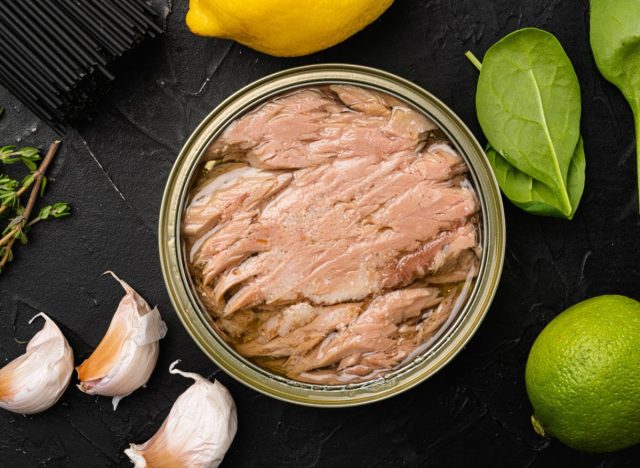
Similarly to the benefits that canned chicken can provide, canned tuna can also provide a healthy dose of protein and fat, while saving you time, energy, and money. If you purchase a can, you’ll have about three years to leave it on your shelf unopened, and if you buy a tuna packet, FoodKeeper suggests consuming it within 18 months.
Spam: 2-5 years

With heavily processed mystery meat like Spam, no one will be surprised that this product has staying power on the pantry shelf. Spam is made of things like pork with ham, salt, sugar, and a controversial preservative known as sodium nitrite, which is the main reason—along with the 800 milligrams of sodium—that this canned ham product can last two to five years on the shelf.
Maple syrup: 4 years – indefinitely (depending on storage method)
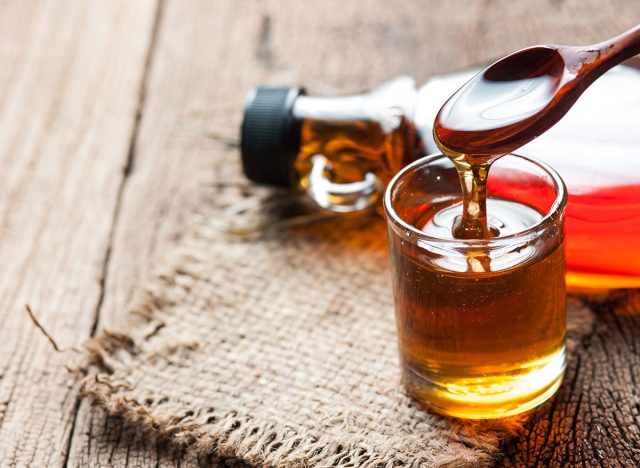
For a sweetener you can throw on pancakes, waffles, yogurt, oatmeal, coffee, or in your favorite baked goods recipes, maple syrup is ideal to stock up on. According to FoodKeeper, you can keep “genuine maple syrup” for up to four years in the pantry if it’s in a glass bottle, and one to two years if it’s in a plastic one. However, if you place the glass maple syrup bottle in the refrigerator, its freshness time changes to indefinitely.
Flaxseed, whole: 1 year
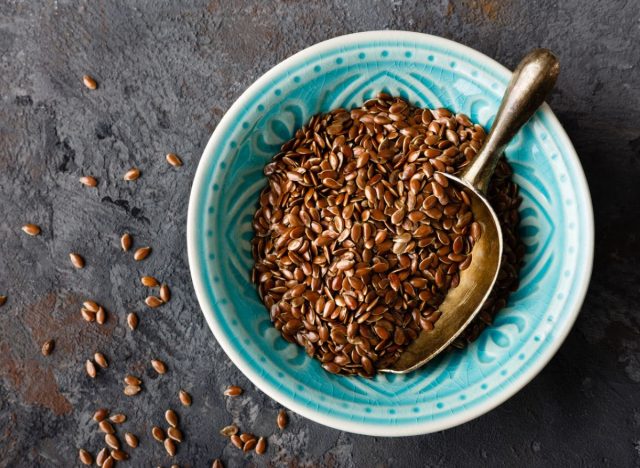
Some people like to keep flaxseed in their pantry because it provides an easy way to get a small boost of fiber, protein, and essential minerals like thiamine, copper, and manganese. Just toss some flaxseed into your oatmeal, a smoothie, or make whole-grain bread with it. If you’re going to keep some on hand, you’ll have about one year with it ground, and up to two years with the whole flaxseed.
Avocado oil: 2 years
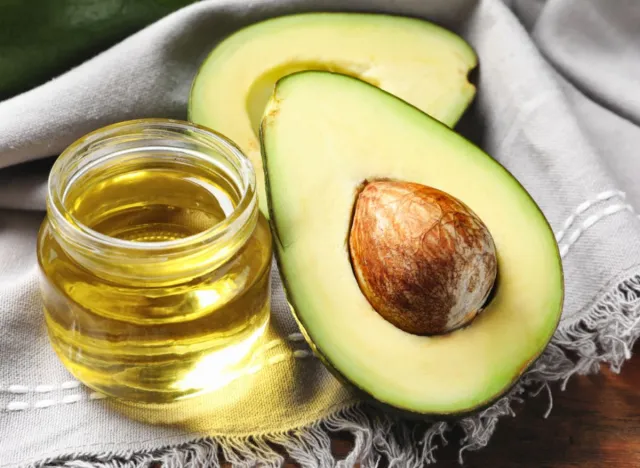
People often use olive oil when they’re looking for something healthier, but olive oil has a shorter shelf life and should be consumed within 12 months from the date of purchase. If you want a cooking oil that provides healthy fats but lasts a bit longer, you can opt for avocado oil, which should last in the pantry for up to two years.
Quinoa: 2-3 years
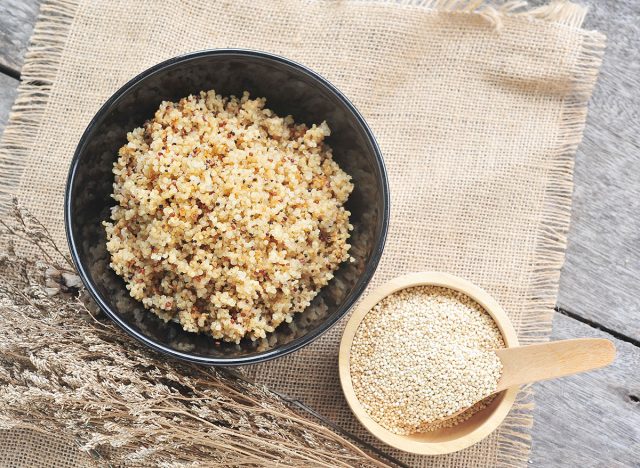
Quinoa is a fibrous whole grain and a source of complete protein, and it can be put into a variety of cuisines and dishes. Buying dried quinoa is an affordable way to keep a whole grain on hand at all times, and according to the FoodKeeper App, quinoa can last up to two or three years in your pantry.
Honey: 2 years
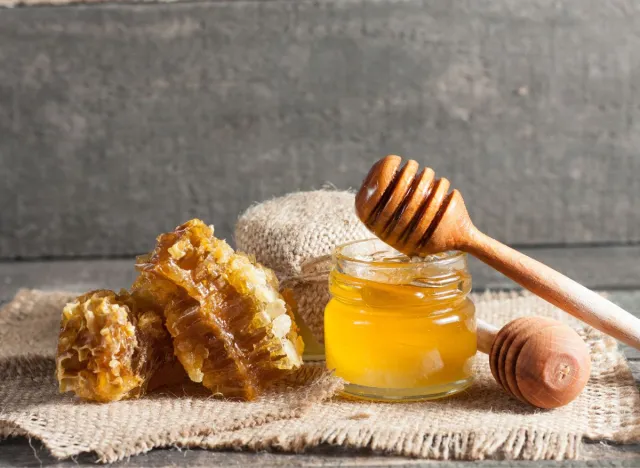
Although the USDA says honey will remain safe to eat for years even after the quality of the honey declines, the government body also suggests consuming it within 2 years from the date of purchase for best quality. If your honey looks cloudy, crystallized, or solidified, you can microwave or heat it in a pan of hot water to clarify or melt it.
- Source: https://www.usda.gov/media/blog/2013/06/27/you-toss-food-wait-check-it-out#:~:text=Most%20shelf%2Dstable%20foods%20are,or%20develop%20an%20off%20flavor.
- Source: https://www.fsis.usda.gov/food-safety/safe-food-handling-and-preparation/food-safety-basics/shelf-stable-food
- Source: https://www.fsis.usda.gov/food-safety/safe-food-handling-and-preparation/food-safety-basics/shelf-stable-food
- Source: https://www.foodsafety.gov/keep-food-safe
- Source: https://www.foodsafety.gov/keep-food-safe
- Source: https://pubmed.ncbi.nlm.nih.gov/31451249/
- Source: https://fdc.nal.usda.gov/fdc-app.html#/food-details/170554/nutrients
- Source: https://www.ncbi.nlm.nih.gov/pmc/articles/PMC7866556/
- Source: https://www.ncbi.nlm.nih.gov/pmc/articles/PMC5198813/
- Source: https://www.ncbi.nlm.nih.gov/pmc/articles/PMC4390211/
- Source: https://fdc.nal.usda.gov/fdc-app.html#/food-details/167536/nutrients
- Source: https://www.ncbi.nlm.nih.gov/pmc/articles/PMC4268643/
- Source: https://fdc.nal.usda.gov/fdc-app.html#/food-details/334194/nutrients
- Source: https://fdc.nal.usda.gov/fdc-app.html#/food-details/169414/nutrients
- Source: https://fdc.nal.usda.gov/fdc-app.html#/food-details/173573/nutrients
- Source: https://www.hsph.harvard.edu/nutritionsource/food-features/quinoa/#:~:text=Quinoa%20and%20Health&text=One%20cup%20cooked%20provides%20about,cannot%20make%20on%20their%20own.
- Source: https://ask.usda.gov/s/article/How-long-can-you-store-honey#:~:text=Information&text=For%20best%20quality%2C%20store%20honey,is%20not%20a%20safety%20concern.









